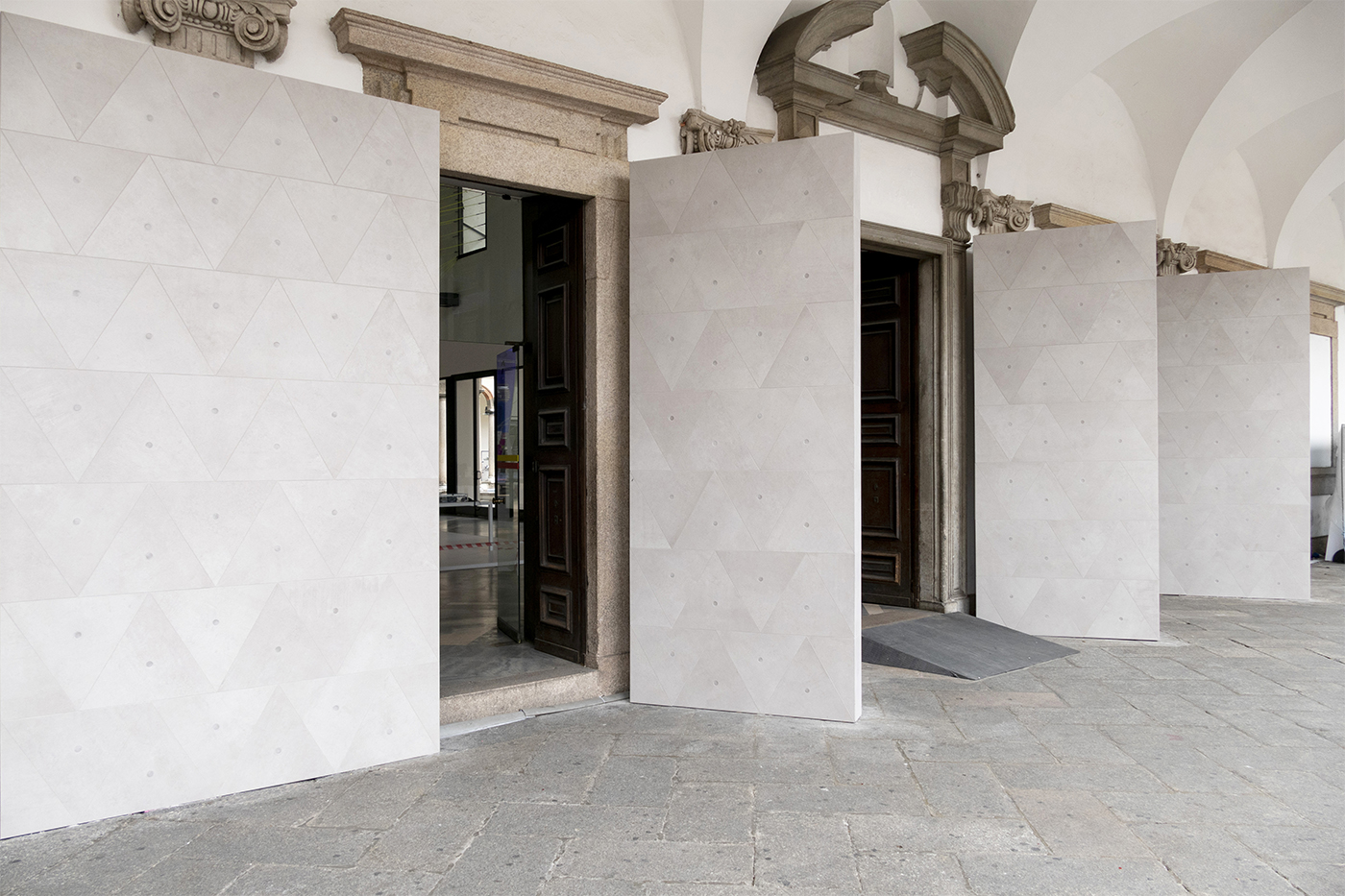
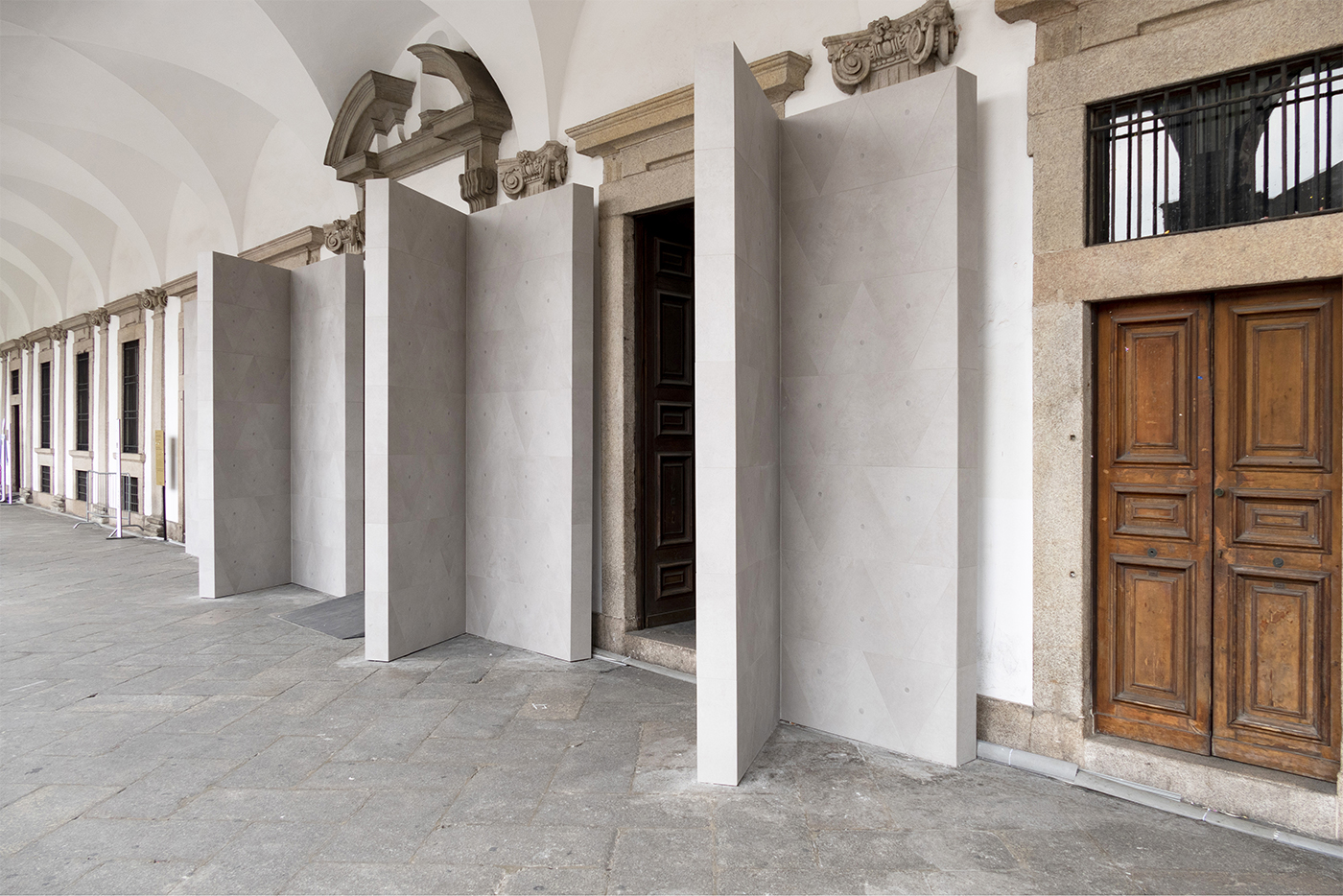
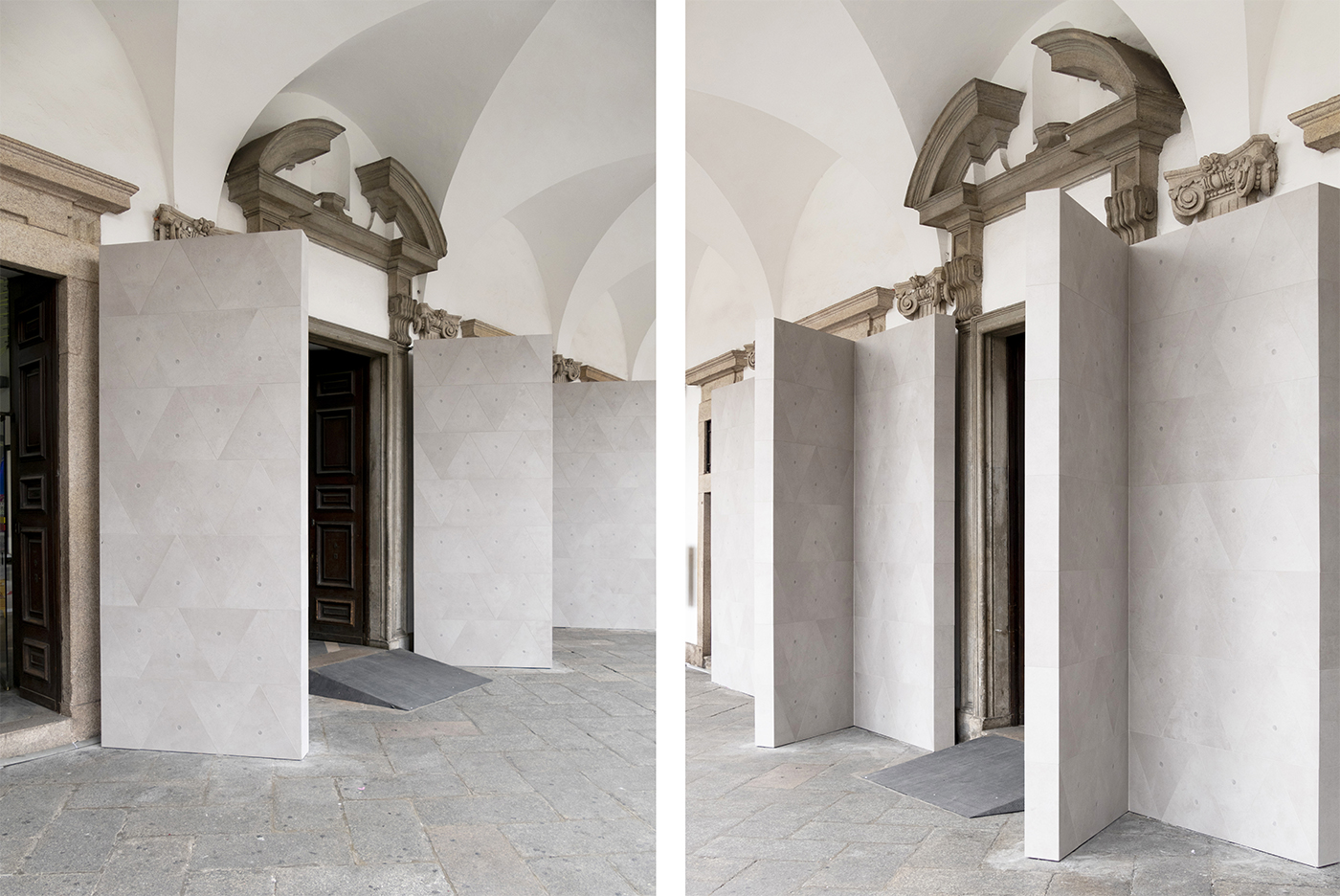
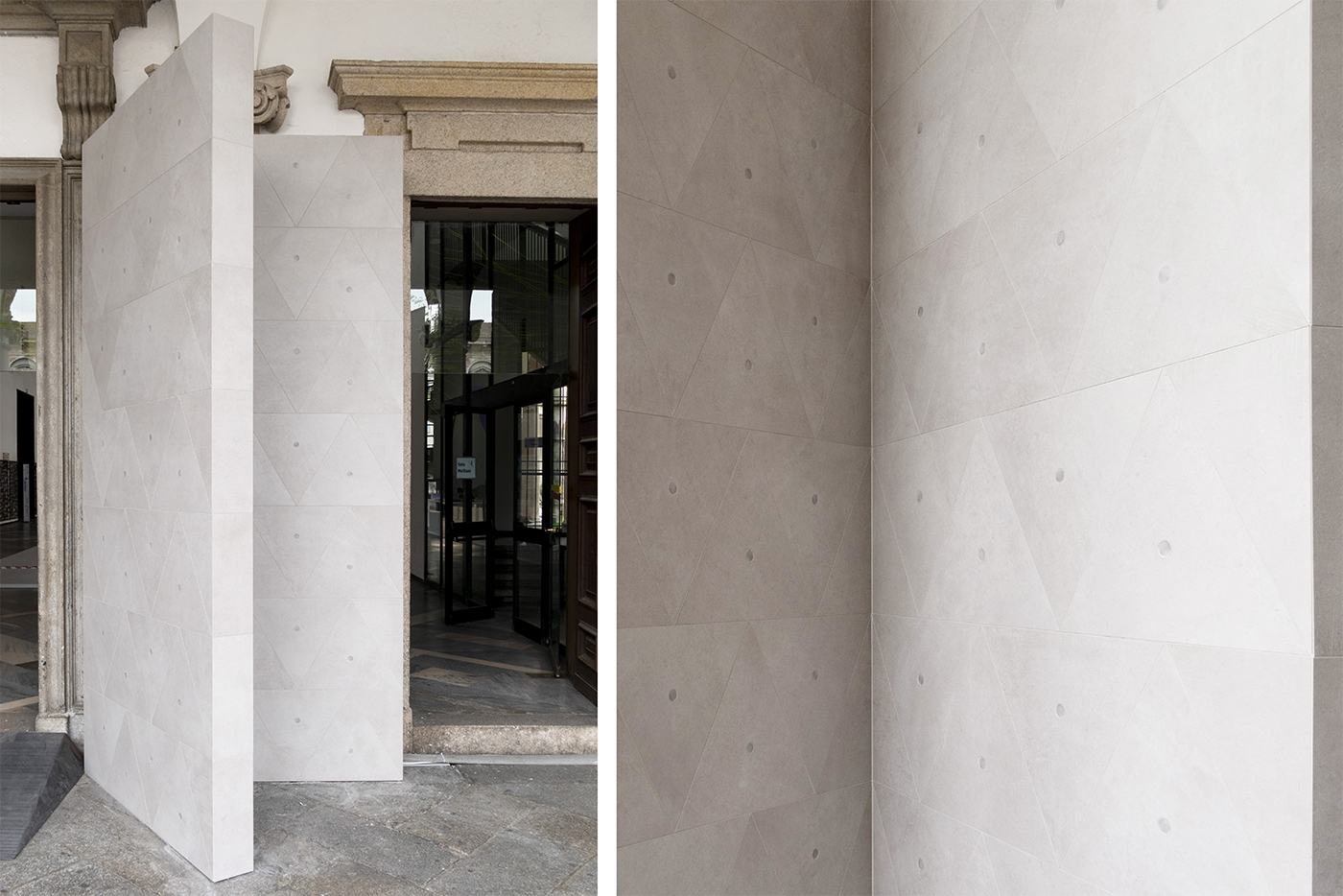
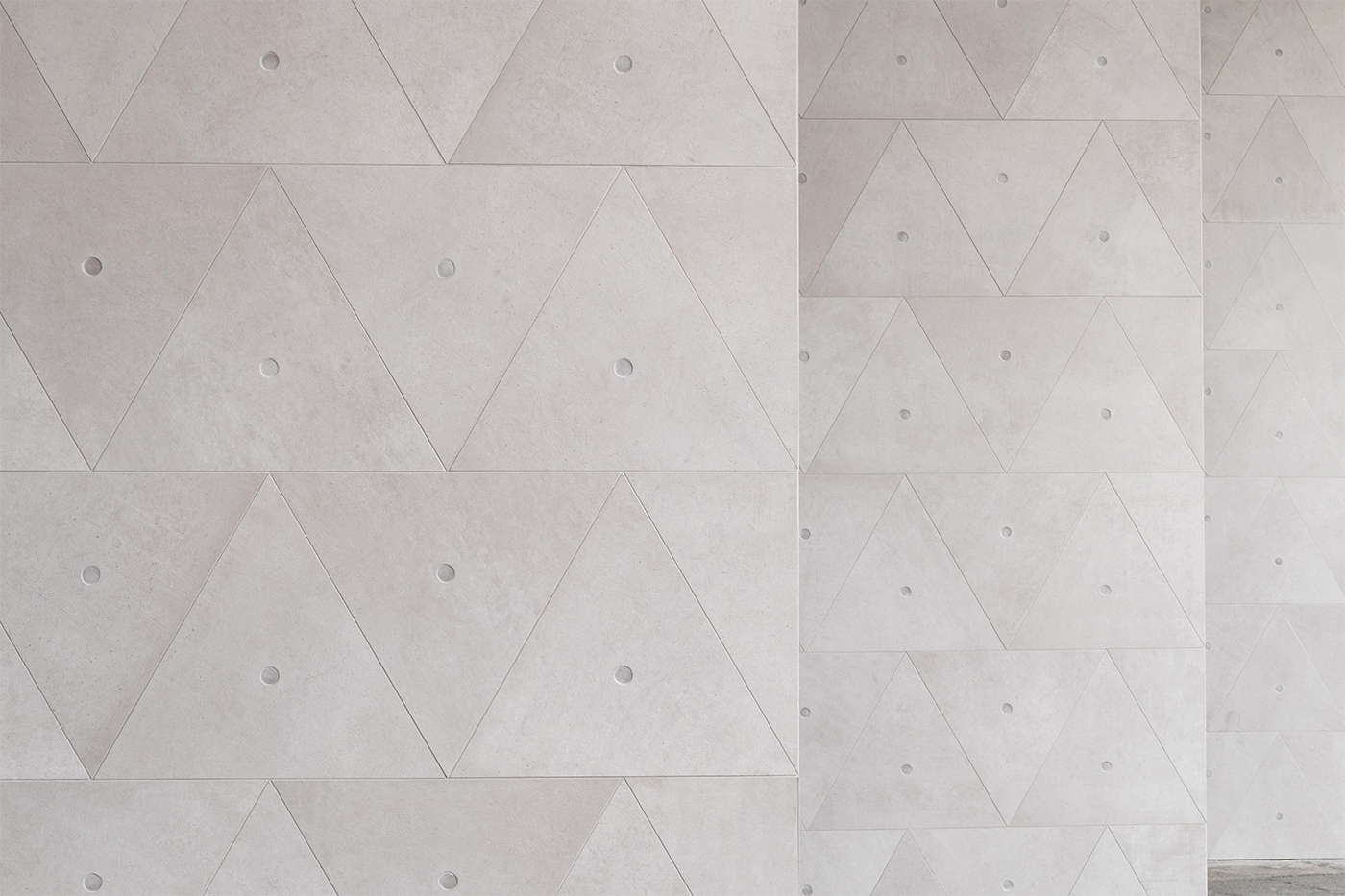
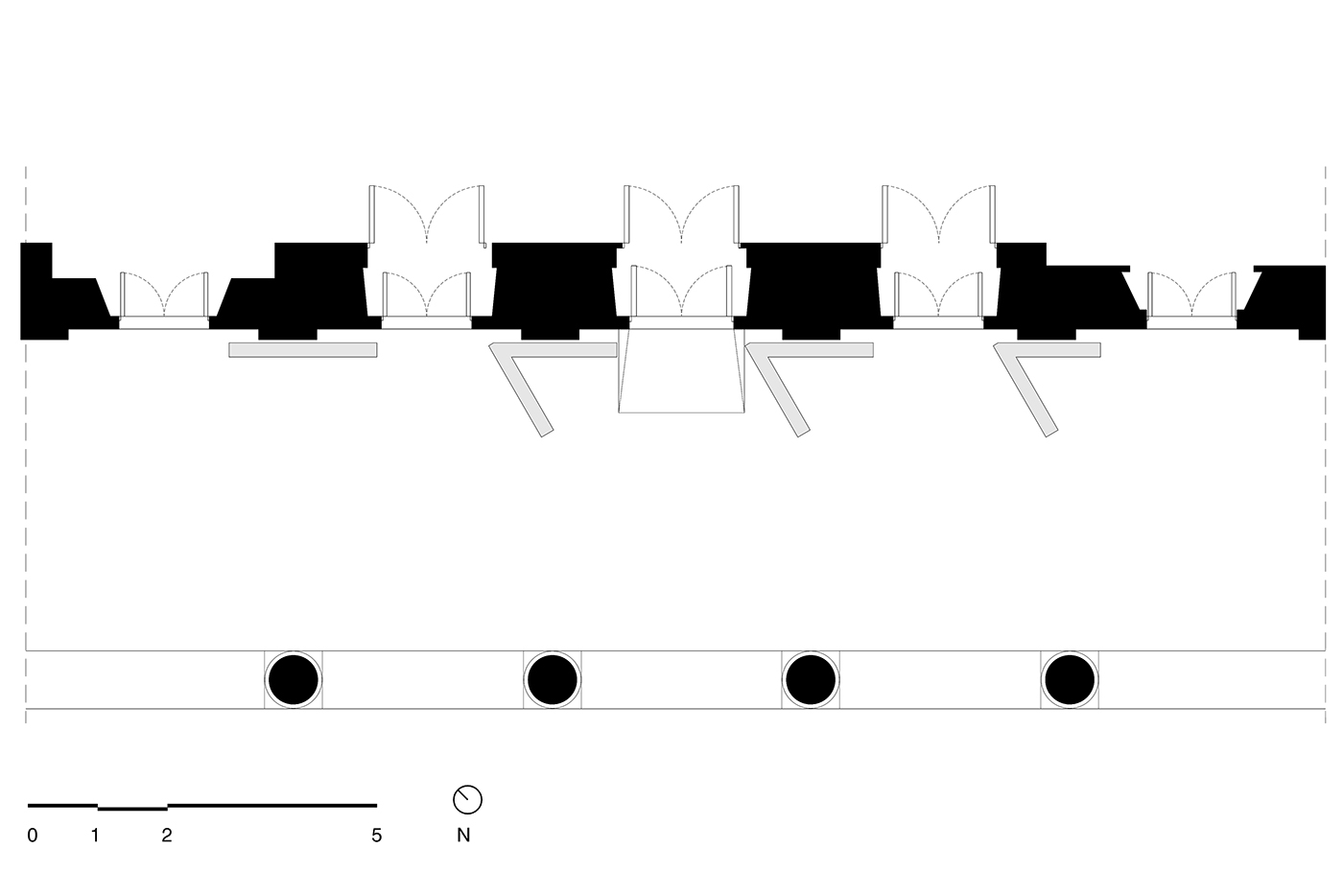
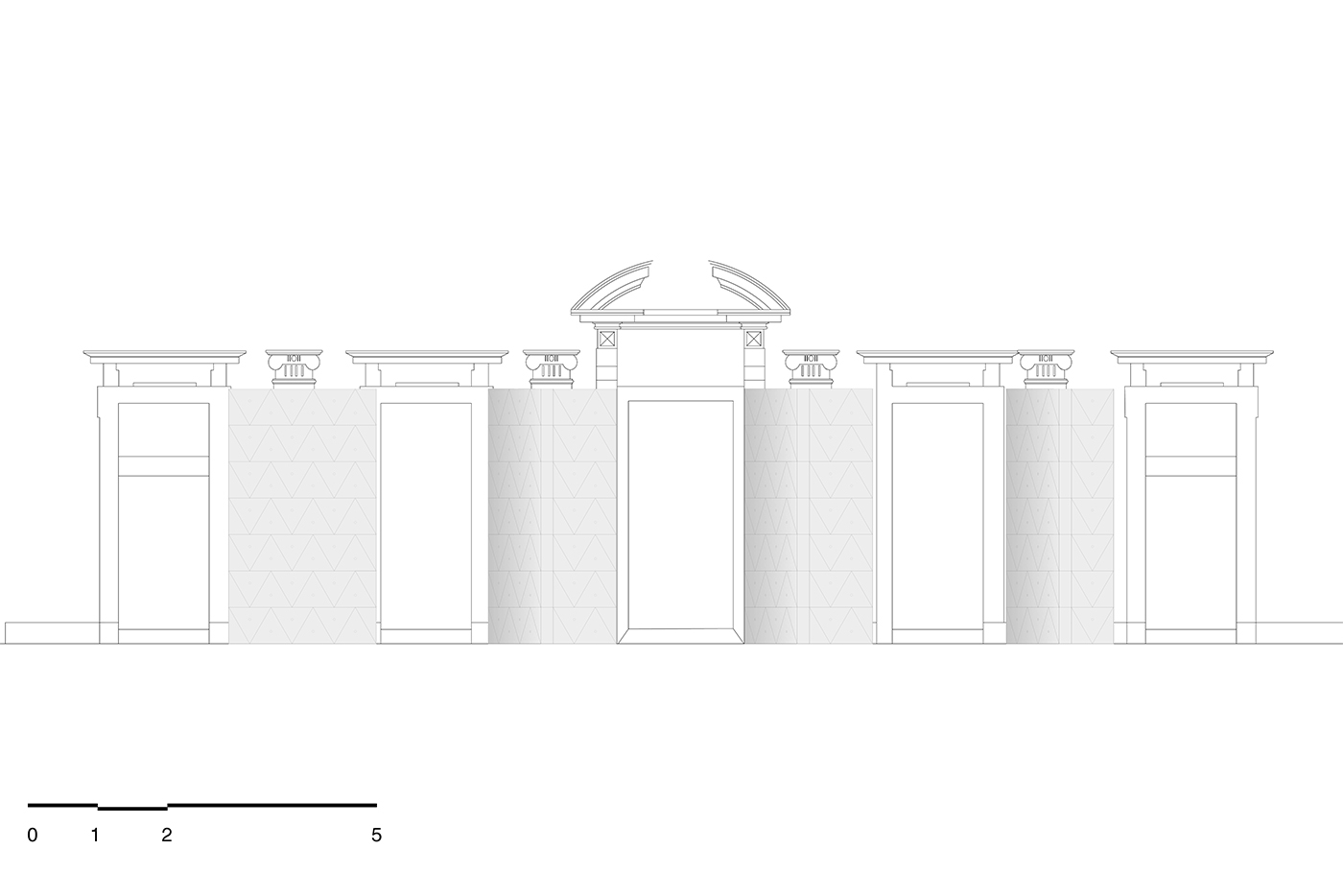
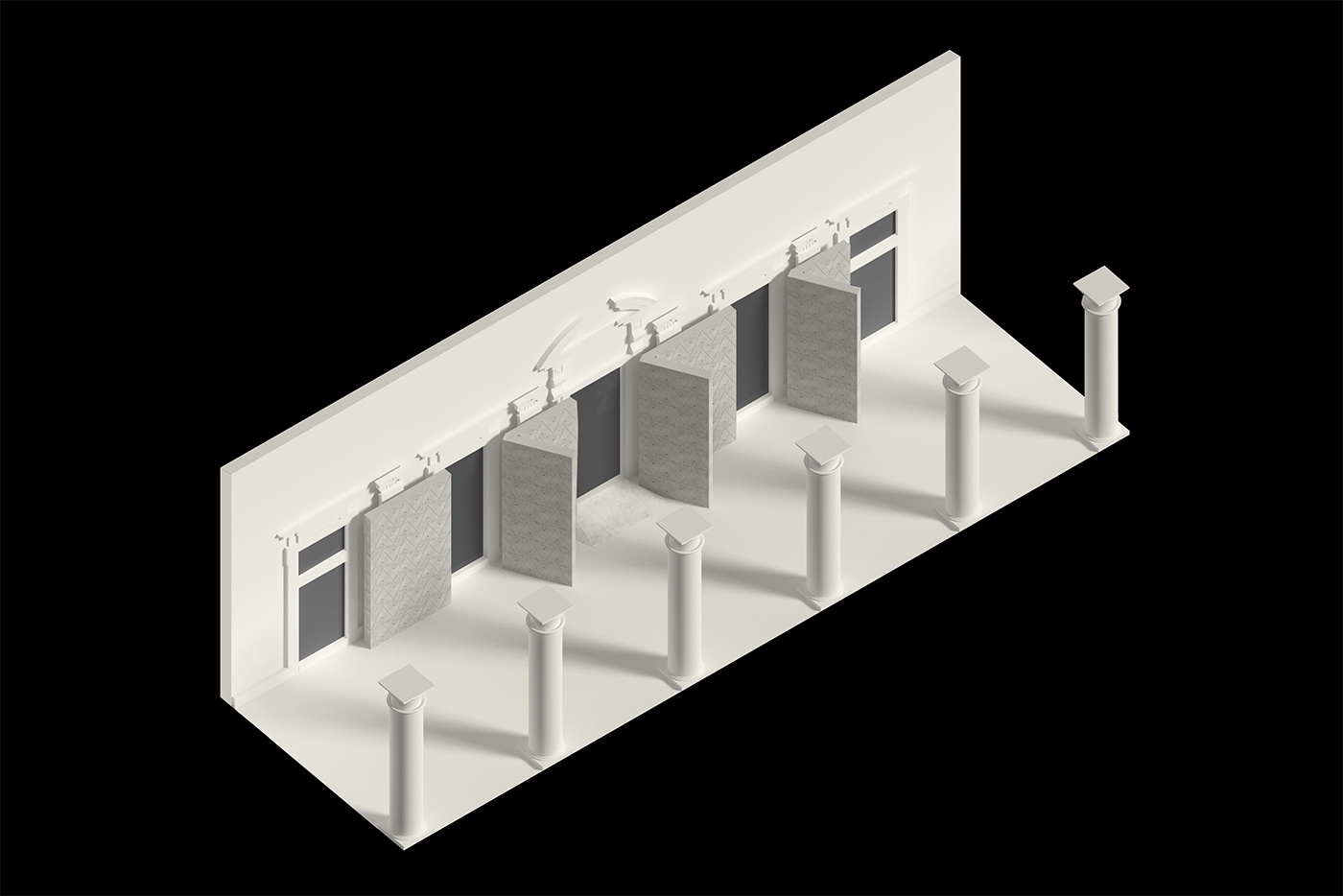
OUVERTURE – INTERNI HUMAN SPACES 2019 – Portale Aula Magna Statale Milano
location
via Festa del Perdono 7, 20122 Milan – Italy
program
Installation of the portal of the Aula Magna with DOT, Ceramica Fioranese
client
Ceramica Fioranese
design
2019
project
Andrea Maffei
coordination
Andrea Maffei Architects, Milan
design team
Christophe Colombo / Andrea Maffei Architects, Milan
general contractor
A&M Production, Reggio Emilia
materials
wood, porcelain stoneware
location
via Festa del Perdono 7, 20122 Milan – Italy
program
Installation of the portal of the Aula Magna with DOT, Ceramica Fioranese
client
Ceramica Fioranese
design
2019
project
Andrea Maffei
coordination
Andrea Maffei Architects, Milan
design team
Christophe Colombo / Andrea Maffei Architects, Milan
general contractor
A&M Production, Reggio Emilia
materials
wood, porcelain stoneware
Fioranese ceramiche:
https://www.fioranese.it/ouverture/
Interni Magazine:
http://www.internimagazine.it/humanspaces/installazioni/ouverture/
DesignBest:
https://magazine.designbest.com/it/store-eventi/eventi/andrea-maffei-racconta-ouverture/
Fioranese ceramiche:
https://www.fioranese.it/ouverture/
Interni Magazine:
http://www.internimagazine.it/humanspaces/installazioni/ouverture/
DesignBest:
https://magazine.designbest.com/it/store-eventi/eventi/andrea-maffei-racconta-ouverture/
no publications at the moment
no publications at the moment
Reinforced concrete is the material that best defines modern architecture. The beton armé has transformed the way of building and living architecture, cities, new urban landscapes. Before we used to build everything in brick or stone. Reinforced concrete has transformed the mentality of ordinary people. He created a new sensation of material: cold, gray, apparently neutral, but at the same time irregular, spotted, alive and vibrant. The way in which it is thrown and vibrated inside the formwork makes it something always different.
Sometimes darker, sometimes lighter, with small holes, uniform. This irrational and unpredictable variety of tones and surfaces brings him closer to the irrationality of man, which captures so many different perceptions in his material. Looking intensely at the cement we read many different stories, parallel, overlapping and full of complexity.
This is not a cold rationalization of construction but a new modern material that the best architects have been able to fill with poetry.
Light remains the great protagonist of cement. When it touches the concrete, the space is transformed in various ways, the perception of the environment is never unique.
In our installation for the Fuorisalone we wanted to create a large reinforced concrete wall that covers the three access doors to the Aula Magna. It had to have its own heaviness, its material consistency and be able to dialogue with the pre-existing ancient one. The idea was that the concrete wall was cut vertically and opened dynamically in front of each door, with three large concrete portals rotated 30 ° to establish an invitation to enter. The voids that are created in the three portals highlight the cornices, the pilasters, the capitals of the ancient doors on the back and establish a dynamic relationship between the ancient marble with the modern concrete. Thus a dialogue between ancient and modern is born, in a dynamic flow of crossing from the outside of the cloister inside the Aula Magna.
The walls are made with DOT tiles that we designed for Fioranese Ceramica. They take up the texture of the cement, with spackled circular holes like those of reinforced concrete formwork. In this case we propose them in a triangular shape as a reinterpretation of the classical form of the rectangular formwork.
Reinforced concrete is the material that best defines modern architecture. The beton armé has transformed the way of building and living architecture, cities, new urban landscapes. Before we used to build everything in brick or stone. Reinforced concrete has transformed the mentality of ordinary people. He created a new sensation of material: cold, gray, apparently neutral, but at the same time irregular, spotted, alive and vibrant. The way in which it is thrown and vibrated inside the formwork makes it something always different.
Sometimes darker, sometimes lighter, with small holes, uniform. This irrational and unpredictable variety of tones and surfaces brings him closer to the irrationality of man, which captures so many different perceptions in his material. Looking intensely at the cement we read many different stories, parallel, overlapping and full of complexity.
This is not a cold rationalization of construction but a new modern material that the best architects have been able to fill with poetry.
Light remains the great protagonist of cement. When it touches the concrete, the space is transformed in various ways, the perception of the environment is never unique.
In our installation for the Fuorisalone we wanted to create a large reinforced concrete wall that covers the three access doors to the Aula Magna. It had to have its own heaviness, its material consistency and be able to dialogue with the pre-existing ancient one. The idea was that the concrete wall was cut vertically and opened dynamically in front of each door, with three large concrete portals rotated 30 ° to establish an invitation to enter. The voids that are created in the three portals highlight the cornices, the pilasters, the capitals of the ancient doors on the back and establish a dynamic relationship between the ancient marble with the modern concrete. Thus a dialogue between ancient and modern is born, in a dynamic flow of crossing from the outside of the cloister inside the Aula Magna.
The walls are made with DOT tiles that we designed for Fioranese Ceramica. They take up the texture of the cement, with spackled circular holes like those of reinforced concrete formwork. In this case we propose them in a triangular shape as a reinterpretation of the classical form of the rectangular formwork.






